July 19th, 2010[XP 2010] Report of second day (Wednesday)
The second day of the conference was one of the busiest for me, and it started with a great keynote…
Keynote: Leveraging Diversity in Parallel: Perspective, Heuristics and Oracles – Scott Page
Scott Page, author of “Complex Adaptive Systems: an introduction to computational models of social life” and “The Difference: how the power of diversity creates better groups, firms, schools, and societies”, gave the introductory keynote on the topic of diversity. His talk was one of the most interesting of the conference to me, since he showed the “algebra of collaboration” or, in other words, what are the factors that make diversity work in a team. A few of the highlights for me were:
- The importance of bringing different perspectives to the table: his example of playing the card game “Sum to 15″ as Tic-Tac-Toe was really good.
- When it comes to problem solving, hardness is not the same as complexity: in hard problems, the solution space have lots of peaks (hard to find the global optimum); in complex problems, the solution space moves (even if an optimum is found now, the entire landscape might change due to external conditions).
- I’ve read about the Wisdom of Crowds before and saw James Surowiecki’s keynote at Agile 2008, but Scott showed the formula behind it: crowd error = average error – diversity. In other words, the amount of diversity will decrease the average error of a crowd.
- Netflix Prize: an amazing story about a three-year-long contest put up by Netflix to beat on their own algorithm that predicts how much someone is going to enjoy a movie based on their preferences. What started as a competition to come up with the best algorithm, ended up in a race to collaboration, when the teams running for the prize started combining their approaches and finding that the diversity on the combined algorithm would yield a better result than any of the solutions in isolation. You can read more about this story here.
“Diversity becomes more valuable as the problem becomes harder and harder” — Scott Page
Thawing the “Design Winter” – Michael Feathers
The second talk I attended in the morning was about how there’s not much going on in the software design space lately. Michael Faethers started off noting that our industry is very generational: a lot of the innovation on development techniques in the past, were followed by a wave of design books around the topic (Structured programming, then Structured Analysis and Design; Object-Orientation, then OO Analysis and Design; and so on). Michael said he decided to stop when he saw the book “Aspect Oriented Programming with Use Cases” :-) But with Agile techniques, the last good reference about design was Martin Fowler’s “Is Design Dead?”, from the early 2000’s. Some of Michael’s points on the topic were:
- Design happens around constraints: everytime there are decisions to be made around how to develop a given piece of software, there will be design happening.
- Architecture is design: people should acknowledge that and recognise software architecture as design.
- Look at design as the composition of “things”, not just classes.
- Design are the trade-offs and the discussions you make when taking a particular decision.
I found it an interesting take on the topic, and agree with most of his claims about software design. I personally think that, as a TDD practitioner, I spend a lot of the time doing design (coding is a design activity, not just typing). I also agree that we need to think about design in a higher level, when defining the system/application architecture: those are the decisions that will be hard to change. To me it’s about being able to combine those early-and-hard-to-make decisions with the emergent aspects that you will discover with time, as your system evolve. What you can’t expect is to get it right on the first time, but be flexible enough to incorporate your learnings into something that can evolve.
The Five Habits of Successful Lean Development – Mary Poppendieck
This was the only session I ended up attending on the topic of Lean/Kanban on this conference. Mary summarised 5 habits of successful lean teams:
- Purpose – “Why are you doing it?” In lean companies, workers have a high sense of purpose and understand how their jobs relate to the common goal/vision of the company.
- Passion – “We Care” Having individuals with intrinsic motivation will produce high quality results.
- Professionalism – “Build the right thing” customers don’t want software. If they could get the same thing without software, they would go there. But also “Build the thing right” as simple as possible – and no simpler
- Pride – Expect local decisions, and push them to the front-line workers. They are effectively engaged in delivering superior customer outcomes.
- Profit – “GM stays in business to make money. Toyota makes money to stay in business.”
As catchy as it sounds to summarise Lean into these “5 Ps” mnemonics, I found it to be just a partial view into the topic. Other strong aspects of Lean are the focus on people, and on leaders taking an active role as teachers. These were some of the things I would also expect to see in a lean organisation that I found missing on this “5 Ps” view.
Done Considered Harmful – Marcus Ahnve
This was a lightning talk by my friend Marcus, and I found it really interesting. It was provocative, by picking on a widely discussed concept in Scrum: the Definition of Done (and things like Done-Done, or Ready-Ready). Marcus’ point is that by calling it “Done”, it creates a fake state that usually translates to a hand-off to a different team, or a partial completion state that encourages local optimization. From Lean thinking we know that hand-offs are usually a big source of waste (along with the queues that are usually associated with it).
I was worried he would only present the problem in the talk, but was otherwise pleased with the approach he suggests to tackle this problem: instead of “Done”, call the state by what it represents (e.g. “Ready for deployment”, “In UAT”, “In Production”). Look at the last column in your wall from a hand-off perspective and treat it as inventory in the end-to-end value stream: you might be accumulating WIP and optimizing locally instead of improving the overall effectiveness of your value stream.
Test Automation at Enterprise Scale – Mark Streibeck
This was the technical session I most enjoyed in the conference. Mark talked about the story behind creating Google’s infrastructure to run tests in a massive scale, across teams and codebases, and to provide useful feedback and reports to their developers and teams. Some of the highlights for me were:
- Scale of the system: they run 60M tests/day, including browser tests (cross-browser and running multiple configurations). More than 1700 projects use it (they account that ~80% of all tests are run on this system). The system runs in ~5000 cores.
- Sharing their challenges: this project involved a lot of infrastructure work, which took a lot of time at the beginning of the project, to come up with a scalable architecture. Also, they had to design a UI for a system that solves a known problem in a different way. They also had a lot of work when integrating with various heterogeneous build/test systems that were already in place accross different teams.
- Rollout process: the way they planned and executed the rollout across the company: starting with a few “early innovators”, organic rolling our to a few “early adopters”, and using feedback from these early teams to “fix it” when helping the “early majority” (they even had setup a day where the entire software engineering group could fix things to make the system better.)
- Creativity when solving problems: one of the biggest problems on building and running tests was fixing dependencies issues for projects. Instead of tackling the difficult task to try and solve those issues as a system feature, they focused on improving the way that these issues are displayed on the UI. Just showing the dependencies and letting the teams see it and fix it by themselves proved to be a much simpler solution to the problem.
Conference Banquet and Keynote
The second day finished with a keynote and banquet at the Student Society building. The keynote was presented by Bjørn Alterhaug and John PÃ¥l Inderberg, and the topic was “Improvisation: Between Panic and Boredom. Perspectives on teamwork, dialogue and presence in music and other contexts”. It was a very interesting talk about improvisation in music but, most of all, it showed me how practice can lead to mastery: the dynamics between the two musicians and how they communicate to each other through music was a fine example of highly skilled individuals that can achieve incredible results in a highly collaborative environment. A great talk to an Agile audience :-)
The evening finished with an amazing banquet and more music concerts, including a “Keep of Kalessin” show – an Epic Metal norwegian band.
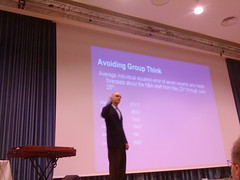

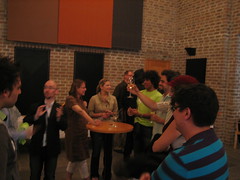
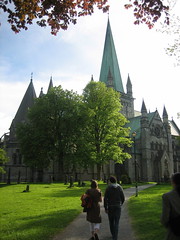
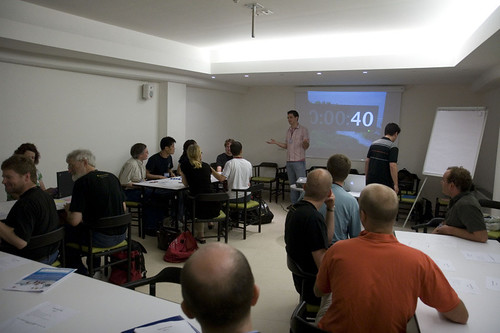






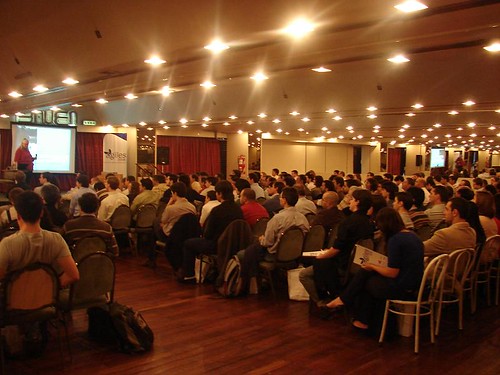
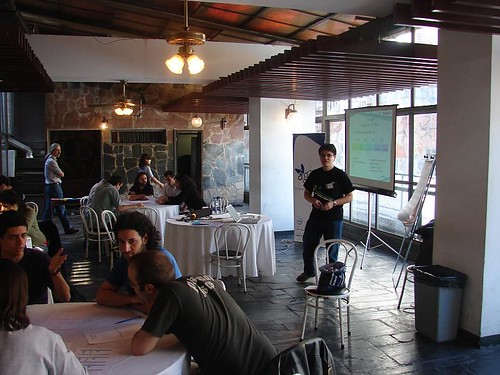



 Twitter
Twitter LinkedIn
LinkedIn Facebook
Facebook Flickr
Flickr